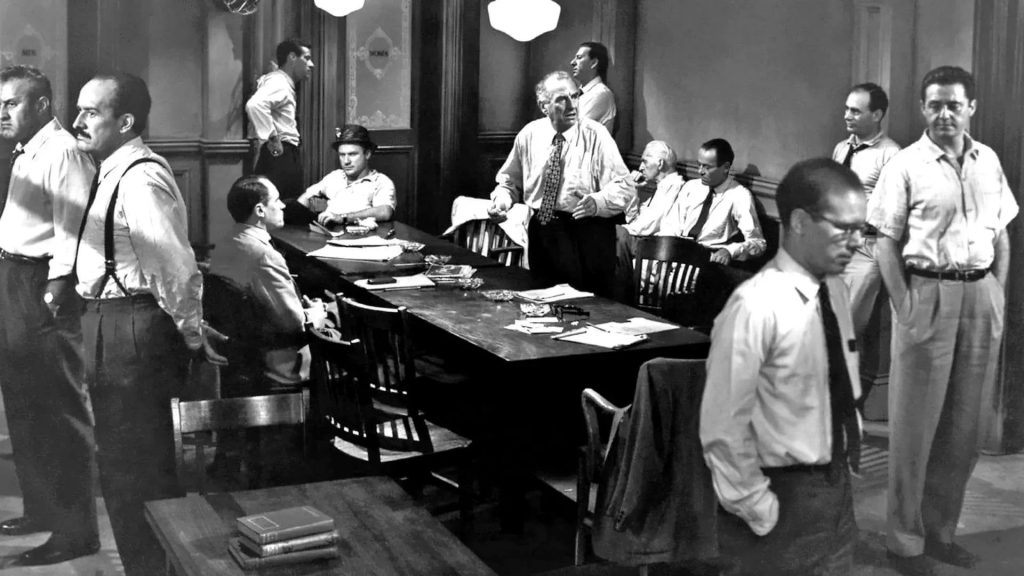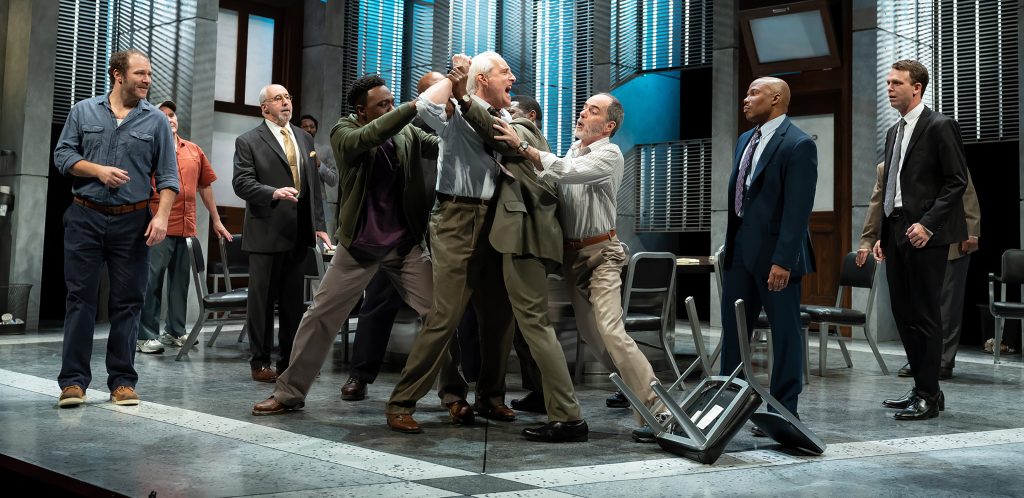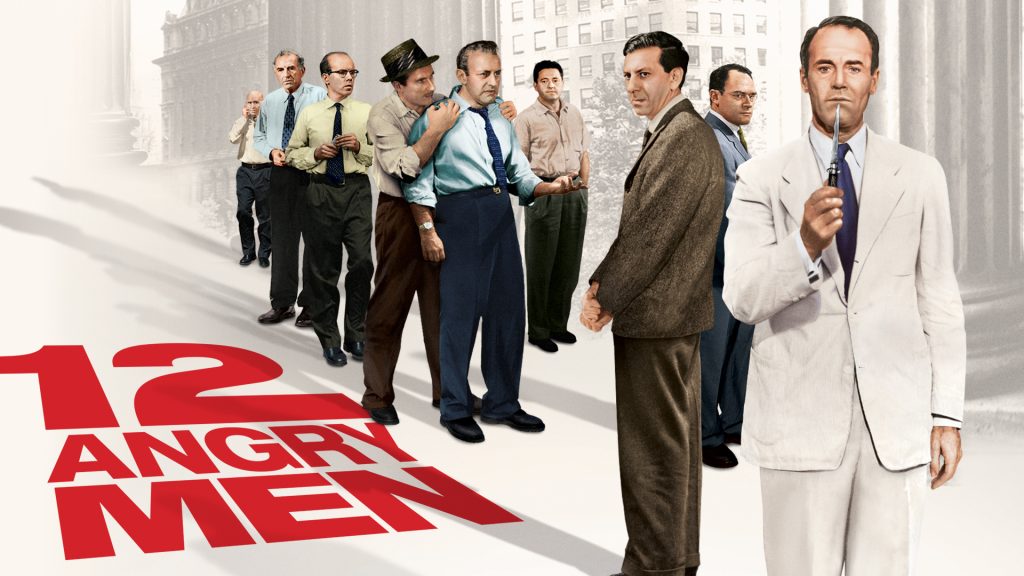Introduction
The film “12 Angry Men” (1957) is measured among the most remarkable courtroom dramas in the history of cinema. Directed by Sidney Lumet, the film stars an ensemble cast that renders emotion-laden interpretation of a jury deliberating the fate of a young defendant. The uniqueness of this film-most of it occurring in the same room-combined with its intense character-driven narrative, left a deep, emotional mark on audiences and filmmakers alike.
Deep into this article are the aspects that cover this film, from the shooting locations to the theater release date, cast and crew, production design, art direction, visual effects, the animation department, budget insights, the lack of traditional soundtrack, and releasing on OTT platforms-something which will also be associated with social media references for further engagement and discussion.
Film Location: Where Was 12 Angry Men Shot?
Essentially, the only locale for 12 Angry Men where the action happens is in a jury room. Though apparently set in New York City, the entire film was shot in Hollywood on a soundstage. The primary purpose of shooting the whole film in one confined space was to maximize the emotional tension in it, since the small jury room has a symbolic role in the movie, representing not just the confined spaces in which the jurors have to work through their differences but also the societal pressures facing them all.
The room itself was designed to be cramped in size, with a large central table and just a few scattered windows, symbolizing only the limited view of the world from the perspective of the jurors. Even though it was made in Hollywood, the design of the whole place made one feel as if the characters were actually locked in a really oppressive environment.
The great attention of the production team with the elements in the set design made sure that everything would up the action of the story. The claustrophobic sensation of the room, the pressure of the verdict, was as much felt in the measure that the space felt as if it were shrinking as the film moved on.
Fans of the film often discuss the set and reality of location via social media such as Instagram, wherein scores of posts touch on the tribute to the iconic setting of the jury room.
Theater Release Date
Theatrical release of 12 Angry Men commenced on April 10, 1957. The film opened on a rather limited scale in New York City, with a show at the Booth Theatre. However, soon after, it began to follow a protagonist well-known for its exciting story and powerful performances. It eventually clinched its critical success and found its way into the broader distribution nationwide.
Though initially not commercially successful, 12 Angry Men came to be the archetypal courtroom drama. Today it defines messages about justice, morality, and prejudice in a way that continues to touch audiences.

Cast and Crew: A Breakdown
One aspect that is most striking in relation to the movie would undoubtedly be the ensemble cast it possesses. Each juror, cast as a different actor, has been able to add distinct elements to the movie in terms of bringing forth a personality or some viewpoint that makes it easier to view it. Below is a table outlining the cast and crew of the film, including their roles in the movie and their contributions to its success.
| Cast/Crew | Role |
| Henry Fonda | Juror #8 (The Dissenting Juror) |
| Lee J. Cobb | Juror #3 (The Angry Juror) |
| Jack Warden | Juror #7 (The Indifferent Juror) |
| E.G. Marshall | Juror #4 (The Logical Juror) |
| John Fiedler | Juror #2 (The Shy Juror) |
| Rudy Bond | Judge |
| Sidney Lumet | Director |
| Reginald Rose | Writer/Producer |
| Boris Kaufman | Cinematographer |
| Carl Lerner | Editor |
| Robert H. Luthardt | Art Director |
Key Cast Members:
- Henry Fonda is Juror #8: The character who occupies the center stage of the film is Juror #8 as portrayed by Henry Fonda. He becomes the only individual during the initial voting process to opt for “not guilty” but subsequently tries to sway the juror’s opinions until and unless there is reconsideration. Fonda’s performance has often been one of the greatest argued against himself.
- Lee J. Cobb as Juror #3: Lee J. Cobb plays the role called Juror Number Three. The juror who is forthright accusing the defendant for his allegedly guilty deeds will build up his emotional overture to full sensation and go down on his knees to evoke final acceptance, which becomes one of the most dramatic and crucial changes in the movie.
- Jack Warden as Juror #7: Jack Warden’s portrayal of Juror #7 is that of an impatient, somewhat indifferent juror who cares more to rush out of the room to see a baseball game than deliberate on the case.
- G. Marshall as Juror #4: The balance and reason that E. G. Marshall brings to the character of Juror #4 has brought in keen fact-based arguments to debate some of the more emotionally-charged subjects raised by a number of the other jurors.
Crew Members:
- Sidney Lumet (Director):It is often said that the direction alone made the film successful. He filmed the entire story in almost real time in combination with tight shots, creating tension and urgency as deliberations went on.
- Reginald Rose (Writer/Producer):Reginald Rose, who wrote the teleplay that was the basis for the film, was also the producer. He adapted it for the screen, faithful to the spirit of the original, and transformed his stage themes into a film medium.
Production Design and Art Direction
The production design plays a vital role in 12 Angry Men in setting the atmosphere for the entire film. Confine the setting to a jury room, so that the emphasis is completely on dialogue and characters. Art direction for the film was under the wings of Robert H. Luthardt, who drew the minimalist set. The jury chamber was conceived as cramped, and some functional elements such as windows, a great table, and worn furniture make it a reality. Sparse adornment in that jury room worked very well to keep the audience focused solely on the faces and conversations around the table. But as the film progresses, the physical space feels increasingly claustrophobic as the tension mounts among the jurors.

Visual Effects and Animation Department
It can be noted that there are not many special effects in “12 Angry Men.” It mainly rests entirely on the human drama being enacted in the jury room. Very light visual effects were added to the film, with its increasing tension created entirely through the cinematography and editing. Techniques such as different angles and zooms were used by the film’s cinematographer, Boris Kaufman, to reflect through the visuals ever-increasing emotions and power shifts among the jurors.
Lack of animation or generated effects was an intentional decision to reinforce and underlie that fact that the dramatic tension comes out of realism and people, not from spectacles.
Budget Insights
12 Angry Men, even so, had a budget of just $350,000. However, that did not stop it from grossing over $2 million through box-office revenues. This is a remarkable amount for such a small production budget. The contributions of a talented cast, a good screenplay, and the direction of Sidney Lumet kept the audience rooting for the story, which takes place within a confined area.
The budget also implied that constructing sets for the film would be limited and mostly shot in one location, thus keeping production costs substantially low. This approach, although cost-effective, is also functional in the story, as these are the elements that press the themes of confinement, prejudice, and moral judgment.
The Song and Soundtrack
Unlike many works in cinema, 12 Angry Men does not contain a so-called “natural”-type score. It instead uses a self-absorbed sound design to record sounds up until the pretending emergence of the realistic sounds of its setting, such as the ticking of a clock, the scraping of chairs, and murmurs of conversation. The absence of a conventional soundtrack helps in favour of the film since it has the most important presentation: its dialogue and the actors’ performances. The synchronised sound environment of this film is one that, despite everything in that room, makes sounds seem very dramatic for every small sound or movement.
12 Angry Men, as per many films, does not have what they call the so-called “natural”-type score. Rather, it had spent itself in energy through a self-absorbed collection of sounds, up to when pretenses emerged from realistic sounds of setting, such as the ticking clock, the sound of chairs being scraped, and murmurs of conversation. The absence of a normal “soundtrack” is to the advantage of the film because it has at least the performance: the dialogue and actors. The resultant matching sound environment of this film is that, in that room, every little noise or movement seems a large sound.
OTT Release Date and Platforms
The classic film, 12 Angry Men, has recently been made available on some OTT platforms allowing an entire new generation of viewers access to the movie. The film was made accessible on platforms such as Amazon Prime Video, Apple TV, and HBO Max so the classic avid viewer and the younger audience who may never have had the opportunity to watch it on the big screen can appreciate this legal classic.
In order to get the latest updates and details regarding its streaming services availability, visit:
Conclusion
12 Angry Men is more of a masterpiece than a film, because such a short and simple story tells everything about the horror of the dialogue, moral deliberation, and character interaction. Although it had a very bare-bones production design, actors impeccable and minimalistic, this movie is still valid even decades after being released. It has a modest budget but truly inspirational in terms of how the justice system reveals its dark side: a classic, timeless film-like tale.
The rest of what sounds interesting regarding the film can be found through its community of fans on social networking sites like Instagram and Facebook, where viewers still ponder the many themes and impacts of the film in the industry.

